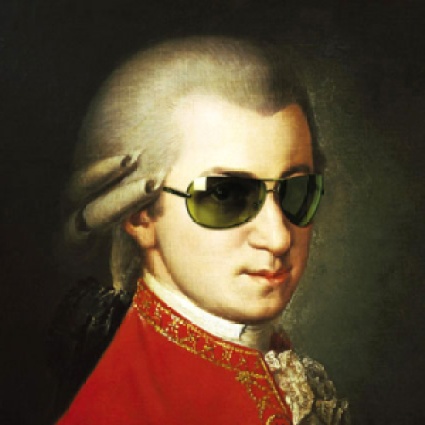Since the mid–19th-century discovery of the sinfonia concertante for four winds sometimes labeled K.297b, the work has been considered authentic by some and dubious by others, and its reception has paralleled these critical vicissitudes.
In 1778 Mozart wrote to his father that he had just written a “sinfonie concertante” for four winds and orchestra that was scheduled for performance in Paris; but it was not performed after all, and the score was presumed lost until a work scored for similar forces—unattributed and not in Mozart’s own hand, but labeled concertante—surfaced in the collection of Mozart’s biographer Otto Jahn after Jahn’s death in 1869.
Despite some discrepancies between the Jahn MS and the composition Mozart had described, it was generally accepted as the missing work and published as such in 1886. For about the first 50 years of its public career it remained a peripheral work in the Mozart canon, seldom performed and little-known.
The work began to attract more attention in the 1920s, as eminent Mozart scholars described it as “magnificent” and praised its “brilliance, breadth, and expansiveness”. Experts agreed that it was an important work, a significant step in Mozart’s development as a composer, and a beautiful and worthwhile piece of music. Certified and buoyed by such enthusiasm, it was increasingly programmed and recorded from the 1940s through the 1960s.
The sinfonia concertante’s fall from grace began when it was dropped from the main body of the Köchel catalogue in 1964 with a terse remark that its arrangement could not have come from Mozart. Expert statements refuting the overall authenticity of the work on stylistic grounds soon followed, and efforts to reclaim it for Mozart failed to stem its fall from scholarly favor. Audience interest diminished accordingly, and the work appears to have been programmed less often since the mid-1970s.
An examination of 168 texts discussing this composition reveals—perhaps not surprisingly— that the authors’ reactions to the work are closely bound to their opinions on who wrote it.
For example, writers who believed that the work was by Mozart described it as strong, sturdy, and solid, while those that did not called it flimsy, arbitrary, illogical, and incomprehensible; those crediting Mozart rated the work highest level and a masterpiece, while those who considered it spurious rated it not first class; and the Mozart designators considered it delightful, celestial, and enchanting, while the non-Mozart camp described it as tasteless, inept, and cheap.
This according to “Musical attribution and critical judgment: The rise and fall of the sinfonia concertante for winds, K.297b” by John Spitzer (The journal of musicology V/3 [summer 1987] pp. 319–56; RILM Abstracts of Music Literature 1988-3046).
Below, we invite you to form your own opinion.
More articles about Mozart are here.













